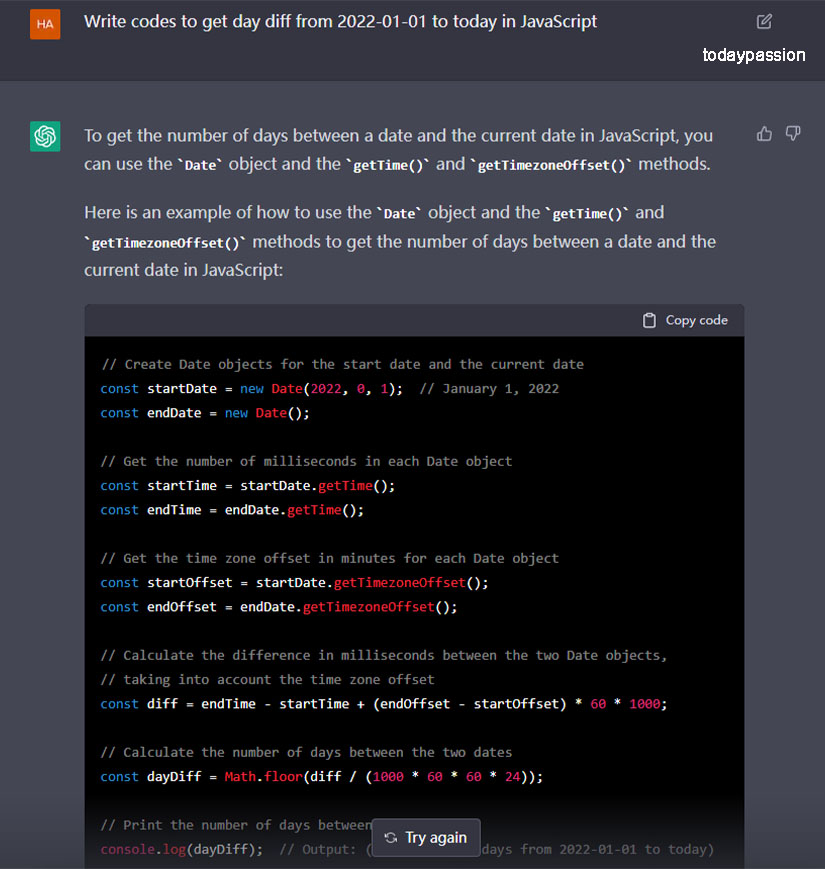On November 30, 2022, OpenAI will release ChatGPT, an Optimizing Language Model for Dialogue.
ChatGPT received a lot of attention and traffic once it was published, and it sparked a lot of debate on many online forums. What is it about ChatGPT that has people so enthralled? In this essay, we will go through ChatGPT in depth.
What exactly is ChatGPT?
ChatGPT is an OpenAI-developed big language model that may be used for natural language processing activities such as text production and language translation. It is based on the GPT-3.5 (Generative Pretrained Transformer 3.5) model, which is one of the most comprehensive and powerful language models available today.
One of ChatGPT’s most notable capabilities is its capacity to create human-like text answers to requests. As a result, it may be used to create chatbots for customer care, generate replies to inquiries in online forums, and even create customised content for social media postings.
You must have access to the OpenAI API in order to utilise ChatGPT. Once you’ve gotten an API key, you may utilise the ChatGPT model by passing it a text string prompt. The model will then provide a response depending on the data it was trained on.
How to Use ChatGPT:
- Go to openai.com
- Create an account and sign in (if you have an account, log in directly)
- On the lower left, choose ChatGPT.
- Try Chat GPT at chat.openai.com.
- In the bottom input box, type the question you want to ask.
ChatGPT’s Application
ChatGPT may be used to perform a variety of natural language processing tasks. ChatGPT has the following possible applications:
Text generation:
ChatGPT can produce human-like text replies to prompts, making it helpful for constructing chatbots for customer support, answering queries in online forums, and even providing tailored content for social media postings.
ChatGPT may also be utilised to do language translation jobs. The model can create accurate and fluent translations of text by supplying it with a text prompt in one language and identifying the target language.
Text summarization:
ChatGPT can provide summaries of lengthy papers or articles. This can be beneficial for rapidly receiving a high-level summary of a book without having to read the full thing.
Sentiment analysis:
ChatGPT may be used to assess the emotional state of a given text. This can be useful for recognising the sentiment of customer comments in order to increase customer satisfaction or for interpreting the general tone and mood of a piece of work.Overall, ChatGPT is an adaptable tool that may be utilised for a variety of natural language processing jobs. The model’s precise uses will be determined by the user’s objectives and aims.
How does ChatGPT Respond?
Coding By ChatGPT Poem By ChatGPT


Translate japanese to english Trump style poem


ChatGPT’s Technical Principle
Deep learning algorithms are used by ChatGPT to produce text replies to prompts. The model is built on the GPT-3 architecture, which is a transformer model that processes and generates text via self-attention techniques.
The GPT-3 architecture is a sort of neural network with numerous layers of linked nodes. Each node in the network is programmed to process a different component of the incoming text, such as the overall meaning, grammatical structure, or contextual information. The nodes collaborate to construct a cohesive and grammatically accurate answer when the input text is transported through the network.
One of the most important characteristics of the GPT-3 architecture is its capacity to learn from massive volumes of data. The ChatGPT model was trained on a vast corpus of text data that included a wide range of themes and styles. As a result, the model may create replies that are extremely relevant to the prompt and demonstrate a level of knowledge and comprehension comparable to that of a person.
The GPT-3 architecture also has the capacity to manage long-term dependencies in the input text. This is significant since many natural language tasks, such as language translation or text summarization, need the model comprehending the overall meaning and context of the text in order to create a result.
The GPT-3 architecture’s self-attention techniques enable the model to capture these long-term relationships and provide correct and fluent replies.
Overall, ChatGPT is built on the GPT-3 architecture, which employs deep learning algorithms and self-attention processes to create human-like text answers to questions. This enables the model to perform a wide range of natural language tasks with high accuracy and fluency, such as text production and language translation.
ChatGPT Results Vs Google Results
ChatGTP Google Search


Who Created ChatGPT?
ChatGPT is built on the GPT-3 architecture, which was created by an OpenAI research team.
Alec Radford, Jeffrey Wu, Rewon Child, and David Luan, all OpenAI researchers, spearheaded the creation of the GPT-3 architecture. The team collaborated with a number of other OpenAI academics and engineers to create and train the GPT-3 model on a vast corpus of text data.
The GPT-3 architecture was presented in a 2020 research article that highlighted the model’s capacity to create human-like text replies to questions. Since then, researchers and developers have widely employed the GPT-3 model for a number of natural language processing tasks such as text creation, language translation, and text summarization.
Overall, the creation of ChatGPT was the product of a joint effort by a team of OpenAI researchers and engineers. The model is based on Alec Radford’s, Jeffrey Wu’s, Rewon Child’s, and David Luan’s GPT-3 architecture.
Data Used to Train ChatGPT?
ChatGPT was trained using a large corpus of text data. The actual quantity of data utilised to train the model is not public, although it is estimated to be in the hundreds of billions of words range.One of the main reasons ChatGPT can create human-like text answers to prompts is the massive quantity of data needed to train it. The researchers at OpenAI were able to train the model to recognise the intricacies and complexities of real language by exposing it to a wide range of text data. This enables the model to create replies that are grammatically correct, clear, and highly relevant to the challenge.
Overall, one of the important things that contributes to ChatGPT’s potency and versatility is the vast amount of high-quality data utilised to train it. It enables the model to respond accurately and fluently to a wide range of natural language processing tasks.
Is it free to use ChatGPT?
To utilise the model, you will need an API key, which is provided for free for specific types of use.
However, there are several limits and constraints to using the OpenAI API and the ChatGPT paradigm. For example, the free API key permits you to make a set amount of calls to the model each month, and the model’s replies may be subject to usage limits.
Furthermore, there may be expenses associated with utilising the OpenAI API and the ChatGPT model, such as fees for exceeding the request limit or using the model for commercial reasons. Before utilising the ChatGPT model, it is critical to thoroughly read the OpenAI API terms of service.
While the OpenAI API and the ChatGPT model are free for some sorts of use, there may be constraints and expenses connected with their use. Before utilising the model, it is critical to thoroughly read the terms of service.
ChatGPT’s Boundaries
ChatGPT, like any other machine learning model, has limitations that users should be aware of. Some of ChatGPT’s possible shortcomings include:
Data dependency:
ChatGPT is a machine learning model trained on a vast corpus of text data. As a result, the model’s response quality and accuracy will be determined by the quality and variety of the data on which it was trained. If the model is not trained on a varied and complete dataset, it may produce irrelevant or inaccurate results.
While ChatGPT may create extremely precise and fluent replies to prompts, it lacks a profound grasp of the world and the capacity to think like a person. As a result, the model may be incapable of generating replies to difficult or abstract queries, or of comprehending the context and implications of a given prompt.
Bias:
Machine learning models, such as ChatGPT, might demonstrate bias in their replies at times. This can happen if the model was trained on skewed or incomplete data, or if the model’s algorithms are biassed in some manner. As a result, ChatGPT users should be aware of the possibility of bias in the model’s replies and take measures to mitigate it.
Overall, ChatGPT is a strong and adaptable natural language processing tool. However, it has limits, just like any other machine learning model, that users should be aware of.




